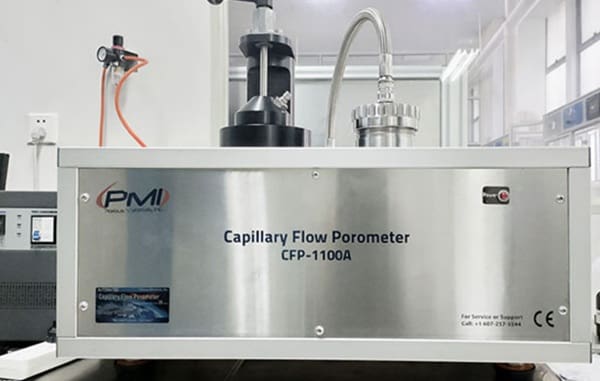In 2025, India’s semiconductor industry is at a critical inflection point. After years of ambitious announcements, policy formulation, and incremental progress, the ecosystem is beginning to deliver tangible outcomes. The government’s efforts through the India Semiconductor Mission (ISM), allied incentive programmes, and state-level policies are converging with global supply chain shifts and domestic demand to reshape India’s semiconductor landscape.
Key Drivers
![]()
1. Strong Domestic Demand & Market Growth
India’s semiconductor end-demand market is estimated around US$ 54–$55 billion in 2025, with forecasts projecting it to more than double by 2030 (to about US$ 100-110 billion).
Growth is driven by sectors like EVs, telecom (5G/6G rollout), data centres, consumer electronics, automotive electronics, IoT and more. There is recognition across industry that past supply chain disruptions (e.g. during COVID-19) exposed how vulnerable India is due to dependence on imports for critical chip and material components.
2. Government Policy & Incentives
The India Semiconductor Mission (ISM) is central. It offers performance-linked grants, capital subsidies, state facilitation (land, power, water), and streamlining of regulatory clearances.
The PLI (Production Linked Incentive) schemes also complement ISM by encouraging investment in fabs, design, testing, and packaging.
Several states have introduced semiconductor or electronics manufacturing policies to attract investment. For example, Andhra Pradesh, Gujarat, Punjab, Tamil Nadu and Odisha figure prominently.
3. New Manufacturing Capacity & First Homegrown Chips
The government has cleared multiple semiconductor manufacturing (fab / ATMP / OSAT) projects — some already under construction.
India’s first indigenous semiconductor chip is expected to be ready by the end of 2025, manufactured under the Semicon India programme, by the Dholera fab in Gujarat with Tata Electronics in collaboration with Taiwan’s PSMC.
4. Roadmap towards Advanced Nodes
India has laid out a 5-7 year roadmap to achieve production at 7-nanometer (nm) technology node, with partnerships like IBM, IMEC being considered to bring in advanced R&D, technology transfer, and capability building.
Meanwhile, initial fabs are expected to produce at coarser nodes (e.g. 28 nm) which are still relevant for many applications (automotive, display driver chips etc).
5. Focus on Ecosystem — Design, Packaging, Materials, Human Capital
Alongside fabs, there is growing attention on upstream / downstream parts of the value chain: design/IP, advanced packaging & testing, compound semiconductors (e.g. SiC), materials, chemicals, equipment, gases.
To support this, governments and industry bodies are working on skilling and training programmes. There is also a push to involve MSMEs, startups and academia in design, prototyping and R&D.
Key Challenges
While the momentum is strong, several major challenges remain:
1. Technology & Node Complexity
Moving to advanced nodes (7 nm, 5 nm and below) is capital-intensive, technically complex, and requires extremely precise manufacturing tolerances, clean-rooms, lithography tools, and highly skilled manpower. India is just beginning to build this capability.
2. Supply Chain Dependencies
Materials, precursor chemicals, specialty gases, high-precision equipment are largely imported. Building local / regional supply chains will take time and require coordinated investment.
3. Financing & Capital Intensity
Semiconductor fabs (especially leading edge) require huge upfront investment (land, infrastructure, machines). Incentives help but the return horizon is long. Investors need clarity, regulatory stability, and risk mitigation (e.g. for geopolitical risks).
4. Skilled Workforce & R&D
There is currently a shortage of talent specialized in semiconductor physics, process engineering, materials science, lithography, etc. Training institutions, R&D labs, and collaborations are needed to scale this talent.
5. Time Lag & Execution Risks
Many projects are announced; some are under construction; but turning announcements into functioning fabs, actual production volumes, quality yields, etc. will take years. Delays, cost overruns or technology transfer issues are possible.
6. Global Competition & Geopolitical Pressure
Other countries (Taiwan, South Korea, USA, China, EU members) are also investing heavily. India needs to find its niche (could be with mid- to mature nodes, or in specialty semiconductors, or packaging / testing) rather than try to do everything at once.
What to Watch in 2025 & Near Term (Next 1-2 Years)
- Whether the “first Made in India chip” (28-90 nm or similar) rolls out as promised by end of 2025. That will be symbolic as well as practical in testing India’s planning, execution, quality, yields etc.
- How many fabs / ATMP / OSAT facilities become operational (not just under approval/construction).
- Progress on the 7 nm roadmap: whether India secures the necessary partnerships, IP/licensing, equipment, and whether domestic production of supporting materials ramps up.
- Scaling up the design ecosystem: more startups / academic institutions doing tape-outs; more domestic IP; better design tool access.
- Workforce development initiatives: licensing / certification / degrees tied to semiconductor process; collaborations with universities and international R&D.
- State-level execution: states such as Gujarat, Odisha, Andhra Pradesh, Tamil Nadu, Punjab etc will compete to attract fabs; state policies related to power, water, land, regulatory clearances will matter.
- Global supply chain alignment: whether India can plug into supply chains of companies in US, Taiwan, EU etc, especially for packaging / testing / materials.
Strategic Implications & Business Analyst’s Take
- For Investors: There is significant opportunity in mid-stream (packaging, testing, design) where India can more quickly scale; the leading-edge fabs will be riskier but also potentially high reward. Diversification across nodes, applications, and regions will help mitigate risk.
- For Domestic Industry & Startups: This is perhaps the best window yet for building domestic IP, getting access to incentives, leveraging government support. But execution discipline (quality, yield, timelines) will be critical.
- For Policy Makers: Need to ensure stable policy regimes, consistency in incentives, streamlined clearances; avoid delays in inter-state infrastructure (power, water, roads). Also need to push localization of materials and skills.
- For Global Firms: India offers demand scale, improving infrastructure, incentives, and a relatively lower cost skilled workforce. Those in semiconductors should be evaluating India as a partner (for fabrication, or for R&D centres, or packaging/testing).
Outlook
By end of 2025, India is likely to have crossed several symbolic and foundational milestones: first indigenous chip production, several fabs/OSAT/ATMP units under production or very close, more design activity, improved incentives, better state-level infrastructure readiness. But the journey to becoming a global semiconductor powerhouse (especially at cutting edge nodes) will require sustained effort over the next 5-7 years (or more).
India has plausible paths to carve niches (e.g. SiC, power semiconductors, packaging/testing, IP/design) rather than trying to match Taiwan or Korea across all fronts. If the country manages alignment of policy, investment, human capital, supply chain, and global demand, it can become a trusted partner in global semiconductor value chains (not just a consumer market).

